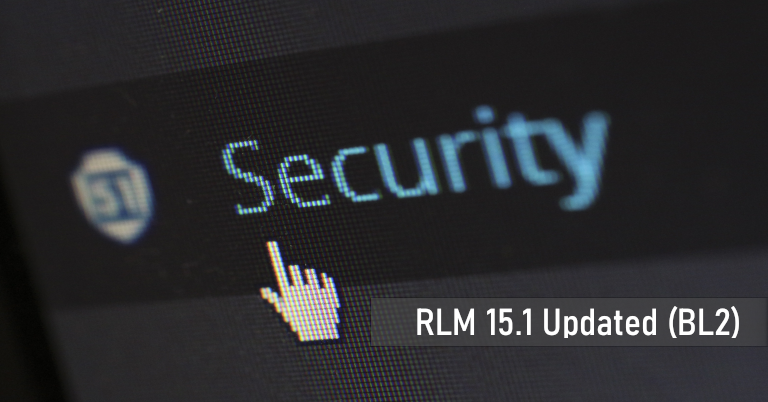Managing and distributing software licenses can be challenging. But with the right tools and guidance, it can become a streamlined part of your distribution process. This comprehensive guide will walk you through how to create software licenses with Reprise and direct you towards the rich resources available on the documentation page for further details.
Introducing Reprise License Manager (RLM)
Reprise License Manager (RLM) is a flexible and easy-to-use license management system that enables software vendors to implement license models that suit their business needs.
It ensures that your organization adheres to the license limits of your purchased software as set by your Independent Software Vendor (ISV). Optionally, RLM can gather usage data for future reporting and analysis, which is presented in a detailed report format as outlined in Reportlog File Format.
When your ISV provides you with software that includes RLM, you’ll receive not just the standard application files but also essential RLM components:
- The RLM license server, known as “rlm” on Unix systems or “rlm.exe” on Windows, supplied by Reprise Software. This server is universal across all ISVs using RLM.
- The RLM utilities, referred to as “rlmutil” on Unix and “rlmutil.exe” on Windows, also from Reprise Software and common to all ISVs utilizing RLM.
- A customized license server created specifically for your ISV using Reprise Software components, which will have a unique name.
- A license file that outlines your rights to use the product, tailored specifically to your organization.
Your ISV will also provide the capability to create an ISV options file, allowing you to manage various operational aspects of each licensed product. This options file, along with an RLM options file, which limits access to certain administrative commands, is discussed later in the manual.
RLM operates on a client-server basis, with software applications sending license requests via TCP/IP to a license server that manages and enforces license usage rights.
What Sets RLM Apart From Other License Managers?
RLM was designed with a clear focus on being user-friendly, open, and straightforward.
We’ve made RLM open by sharing how our report logs are formatted. This means you or your customers can easily check and create reports about how licenses are being used on RLM servers.
RLM is transparent because we don’t have hidden tricks that change how things work from one software vendor to another. We’ve made understanding license agreements simpler by putting all the necessary details directly into the license file itself. This way, your customers don’t need to dig through technical details to understand what they’re allowed to do with their software.
Lastly, RLM is designed to be simple. It automatically picks the best license server from a group without needing any special programming. In the past, managing several license servers could get complicated and required a lot of extra coding. RLM handles all of this on its own, making things much easier for everyone.
How to Create Software Licenses with RLM
Creating software licenses with Reprise License Manager (RLM) offers flexibility and security in managing your software distribution. There are three primary methods for generating licenses:
- using the standard rlmsign utility,
- developing a custom license generator through the rlm_sign_license() API call,
- and utilizing RLM Internet Activation for online license retrieval.
The rlmsign tool is particularly useful as it automates the process of reading template license files and computing secure license keys that prevent unauthorized adjustment of license parameters.
Licenses can be encoded in different character sets depending on the desired security level, with options for hexadecimal numbers, uppercase letters and numbers, or a mix including lowercase letters and special characters.
For cases where generating a license file directly isn’t feasible, RLM’s API allows for in-memory license creation. Furthermore, RLM Activation Pro enhances the process by enabling customers to acquire their licenses via an activation key from your website at their convenience.
This system ensures that your product names remain unique within your company, though it reserves names starting with “rlm_” for internal use.
For more information on creating licenses, the license file format, or the methods described above, see Creating Licenses in the RLM documentation.
Advanced Topics and Reference Material
For those looking to deepen their understanding of RLM’s capabilities, the Reprise documentation offers insights into advanced topics and a comprehensive reference manual.
These resources cover everything from troubleshooting common issues to leveraging advanced features for customizing your licensing strategy. Whether you’re interested in detailed information about RLM Cloud‘s advanced functionalities or looking for guidance on Activation Pro Basics, the documentation serves as an invaluable resource.
The Bottom Line
Reprise License Manager (RLM) stands out as a robust solution for managing software licenses efficiently and effectively. Whether you’re a newcomer to software licensing or an experienced professional looking to refine your strategy, RLM offers the tools and flexibility needed to support your licensing needs.
If your goal is to create software licenses that are secure, customizable, and in line with your business model, RLM is designed to help you achieve exactly that. For additional assistance, questions, or comments, the Reprise Software team encourages users to reach out via support@reprisesoftware.com. To request a demo, or for sales inquiries, please use our contact form.









